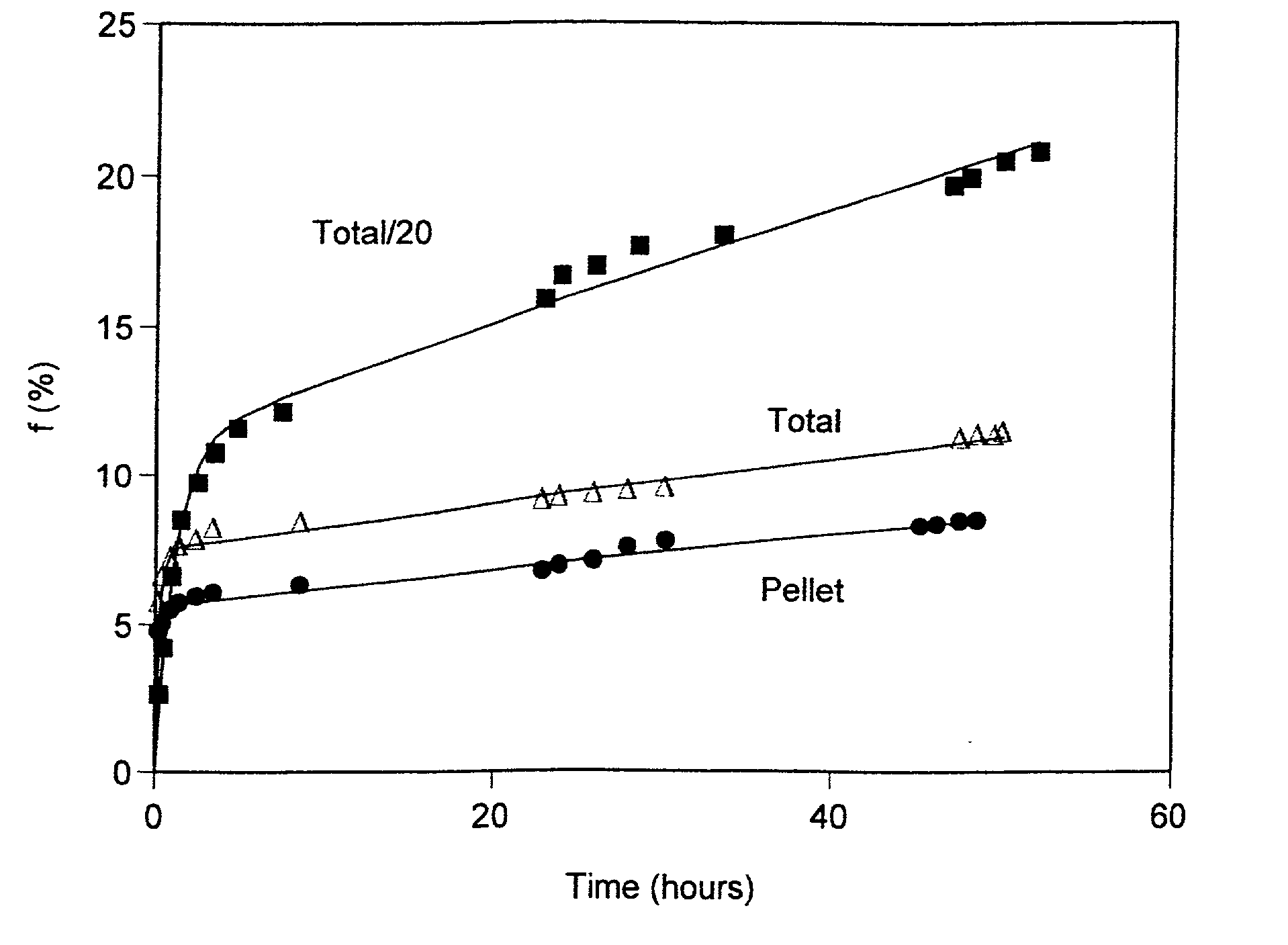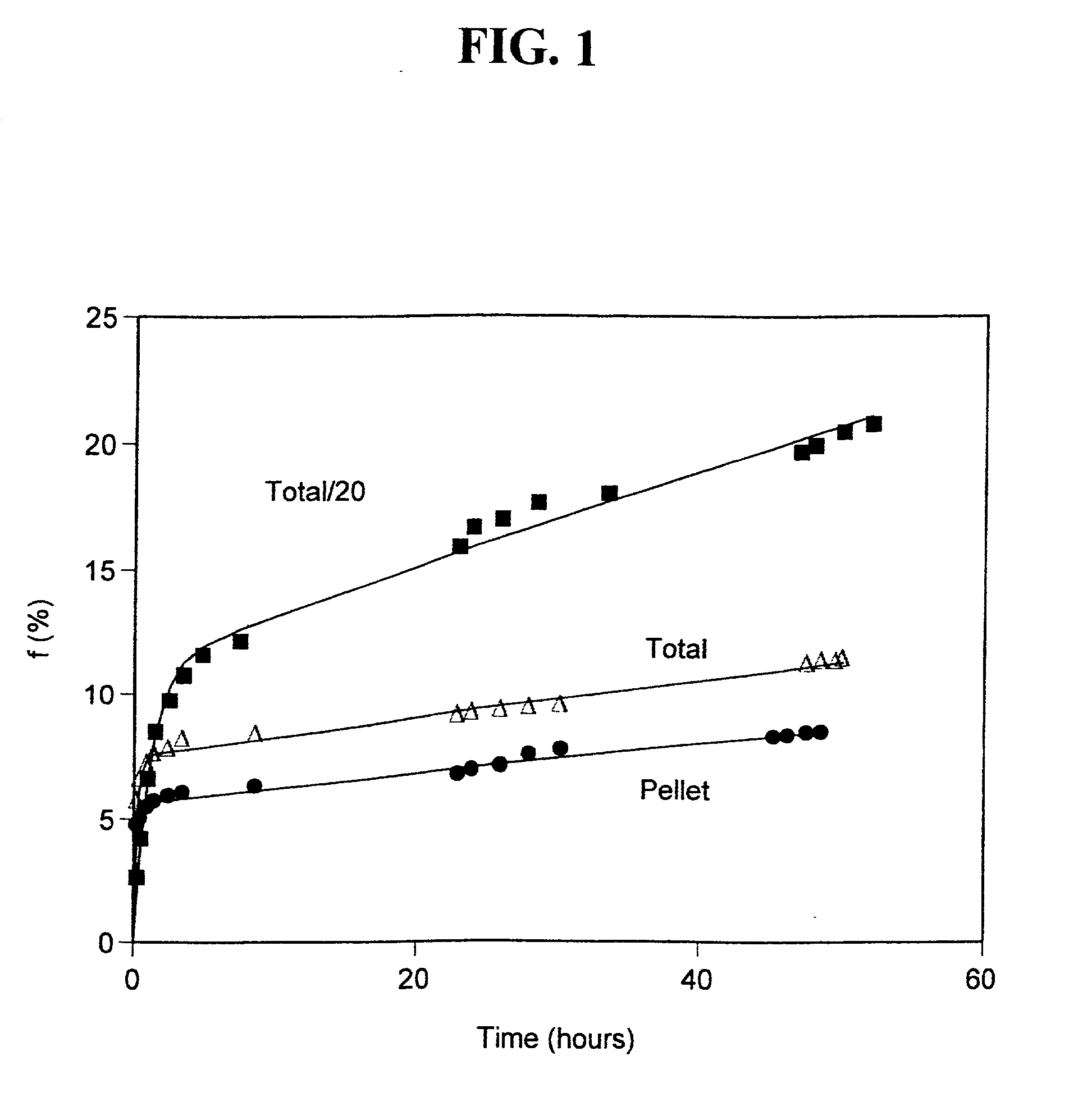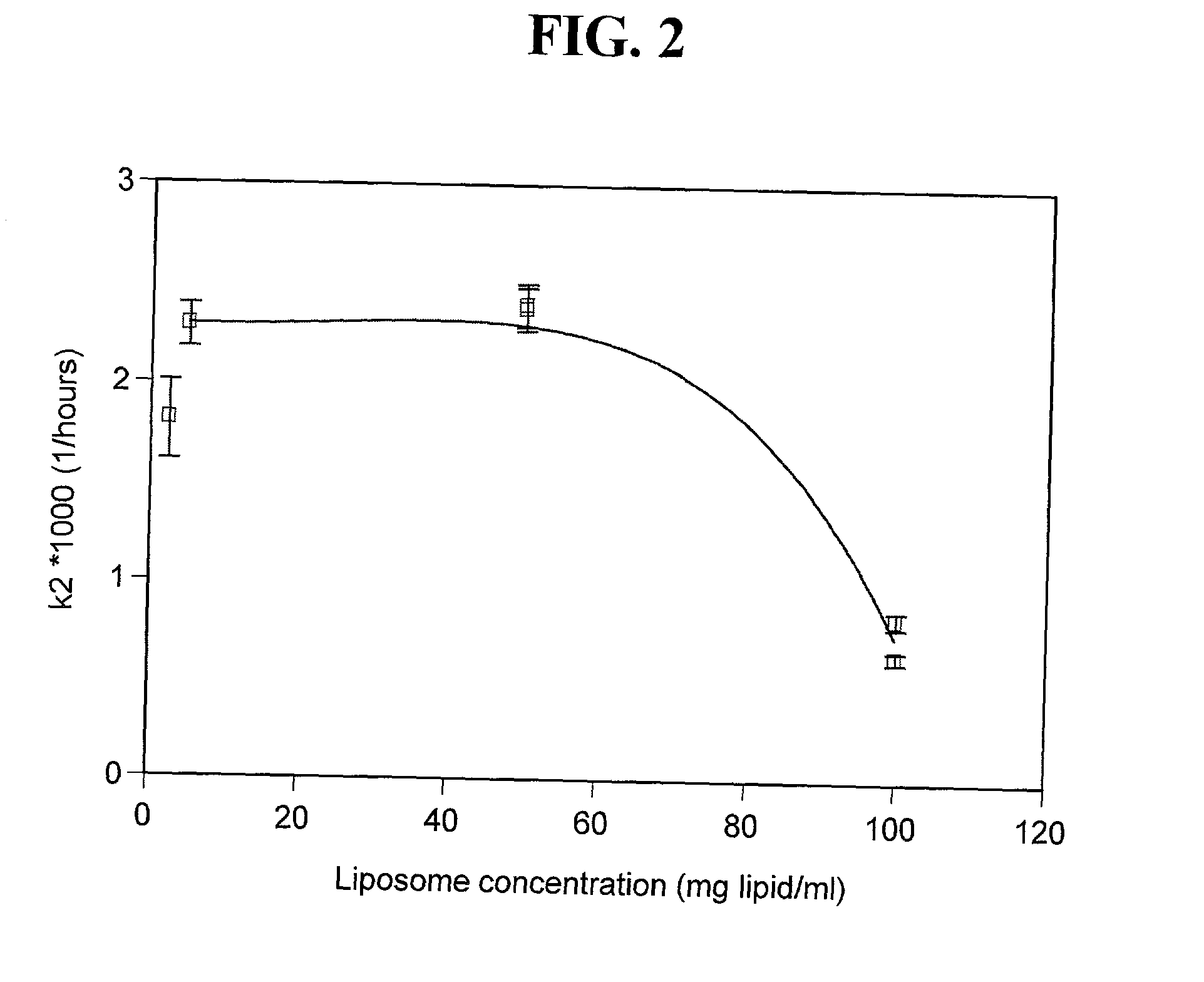Liposome-encapsulated insulin formulations
a technology of insulin and liposome, which is applied in the direction of peptide/protein ingredients, extracellular fluid disorder, metabolic disorder, etc., can solve the problems of ineffective types of administration, no satisfactory method of orally administering insulin, psychological and physical pain of drug injection, etc., and achieves the effect of higher encapsulation efficiency
- Summary
- Abstract
- Description
- Claims
- Application Information
AI Technical Summary
Benefits of technology
Problems solved by technology
Method used
Image
Examples
example 1
[0109] Acidic insulin-encapsulating multilamellar liposomes (MLV) were made from soybean phosphatidylcholine essentially by the conventional lipid-film method (Gregoriadis, Liposome Technology, volumes I-III, CRC Press, Boca Raton, Fla. (1984)). Briefly, the lipid was weighed, dissolved in chloroform, transferred to a round-bottomed flask and evaporated to dryness under low pressure using a rotary evaporator. The swelling solution, consisting of human recombinant insulin, a product lyophilized from HCl, was dissolved in water to a concentration of 40 mg / ml and added to the lipid film. The preparation was vortexed extensively for 2-5 minutes, and incubated with continuous shaking or rotating at 27.degree. C. for two hours. At the end of the incubation period, the preparation was transferred from the round-bottomed flask to a vial appropriate for storage under regular refrigeration. The pH of the preparation was measured and found to be 2.67.
[0110] To determine the efficiency of encap...
example 2
[0111] Acidic unilamellar liposomes (ULV) were prepared using an extrusion device (Lipex Biomembranes Inc., Vancouver, British Columbia, CA) Model T.001. An aliquot of the acidic MLV prepared in Example 1 was used as the source material and the aqueous medium was 0.01 N HCl. Extrusion was through polycarbonate membranes (a stack of 2 membranes) under nitrogen pressures of 50-100 PSI. The first extrusion was through membranes with a pore size of 1 .mu.m, followed by seven successive extrusions through membranes with a pore size of 400 nm. The liposome system underwent a 10 fold dilution in the course of the extrusion and preparation for centrifugal separation. Storage, centrifugation and determination of encapsulation efficiency were performed as described in example 1 above, yielding an encapsulation efficiency of 7.7%.
example 3
[0112] An aliquot of the acidic MLV prepared in Example 1 was titrated to neutrality with NaOH, and buffered by PBS to a final pH of 7.57. The aqueous media was PBS pH 7.4. Storage, centrifugation and determination of encapsulation efficiency for 30-fold and for 10-fold diluted samples (compared to the original insulin concentration of the acidic MLV) were performed as described in Example 1 above, yielding encapsulation efficiencies of 13.5% and of 31.7%, respectively.
PUM
| Property | Measurement | Unit |
|---|---|---|
| diameter | aaaaa | aaaaa |
| diameter | aaaaa | aaaaa |
| molecular weight | aaaaa | aaaaa |
Abstract
Description
Claims
Application Information
 Login to View More
Login to View More - R&D
- Intellectual Property
- Life Sciences
- Materials
- Tech Scout
- Unparalleled Data Quality
- Higher Quality Content
- 60% Fewer Hallucinations
Browse by: Latest US Patents, China's latest patents, Technical Efficacy Thesaurus, Application Domain, Technology Topic, Popular Technical Reports.
© 2025 PatSnap. All rights reserved.Legal|Privacy policy|Modern Slavery Act Transparency Statement|Sitemap|About US| Contact US: help@patsnap.com



